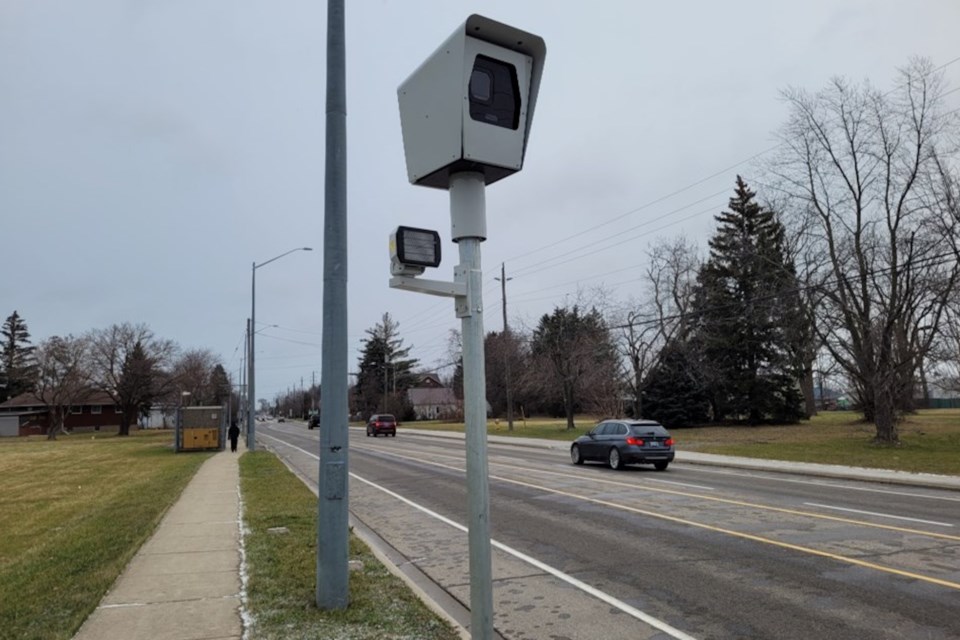The two speed cameras that are no longer functioning in Niagara-on-the-Lake will remain where they are.
Niagara Region, through its automated speed enforcement efforts, previously erected cameras along Niagara Stone Road near Crossroads School as well as in front of St. Davids Public School on York Road.
The camera on Niagara Stone Road was working and collecting fines the first three months of 2024.
From April to July, the St. Davids camera was functioning, also recording the speed of drivers who passed by the school.
The Niagara Region chooses and posts locations where cameras are put in operation for several months, and then shifts to new places, so far always near schools.
But the housing of the cameras still sit at some spots, including the two in NOTL, where they will remain, says Niagara Region director of transportation Frank Tassone.
The region uses a combination of two different automated speed enforcement cameras, he said. Some are installed with a permanent fixed housing on a pole, and others use a roadside mobile unit.
“Once installed, fixed housings remain in place at all times, even if the camera itself is temporarily removed and rotated to another location. It is not feasible to install and remove fixed housing equipment each time a camera is rotated,” said Tassone.
When cameras are active in a community safety zone there will always be “Municipal Speed Cameras In Use” signs displayed at each end of the zone, he explained.
When cameras are not in use these signs are removed. Drivers can watch for road signs to confirm when speeding violations are being ticketed by automated enforcement or refer to the region’s website for current camera locations, Tassone explained.
But even if there is no camera inside the housing, it still has an impact. “Our data shows that reductions in speed continue to be seen in community safety zones even when cameras are no longer present. This was an anticipated result of implementing the program,” he said.
At a public works committee meeting last spring, regional councillors agreed to move ahead with eight new cameras by 2026, at a cost of about $1.9 million.
Regional staff said at that same meeting that speed cameras have resulted in an average speed reduction of 13 km/h since the first one was installed in September 2023.
There are eight cameras functioning across the region in the current rotation of January to April.
Niagara Falls and St. Catharines each have two in their cities, while Grimsby, Welland, Port Colborne, and West Lincoln have one each in operation at the moment.
Regional Coun. Andrea Kaiser said the opinions about speed cameras from within the community have been “definitely a mix" since they were first introduced in NOTL a year ago.
She believes they have made an impact and slowed down drivers.
“I think that’s what we’re trying to accomplish, to change people’s behaviour,” she told The Local.
During last spring's public works meeting, flashing lights, also known as beacons, were part of the conversation, with the region comparing their effectiveness to speed cameras.
Flashing lights are not in operation in school zones where speed cameras exist, because drivers would have an argument that they weren’t flashing when they received a ticket, Tassone said.
When automated speed enforcement equipment is set up, there is a requirement that lights are deactivated.
Kaiser said that early on there were concerns from residents about signage in community safety zones, but that staff have addressed this by making them more clear, “forward facing” and placed to notify drivers they are entering a zone where a speed camera exists.




